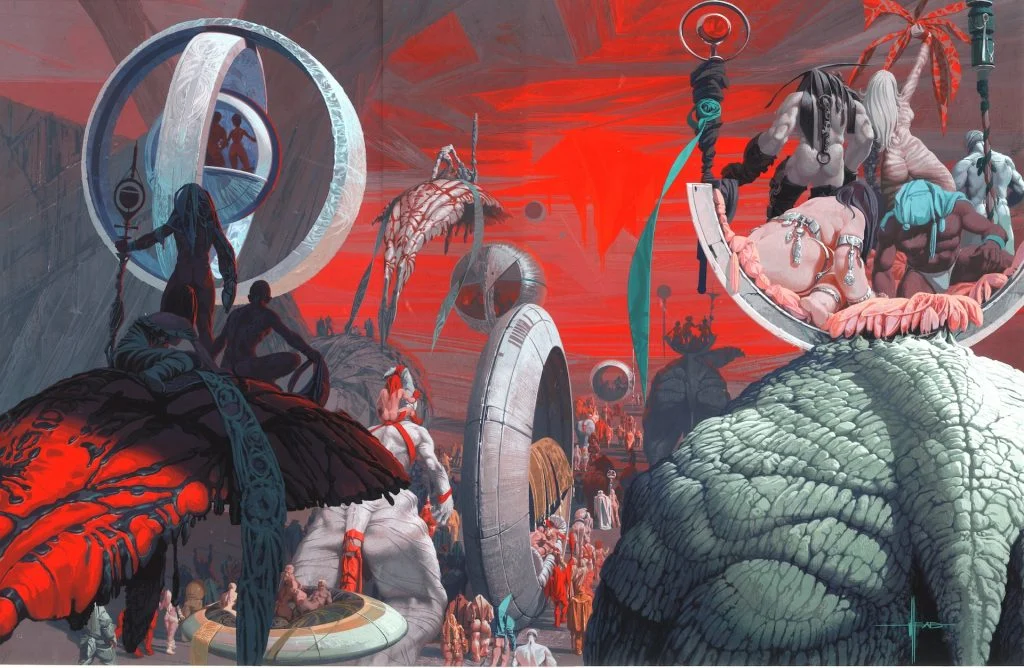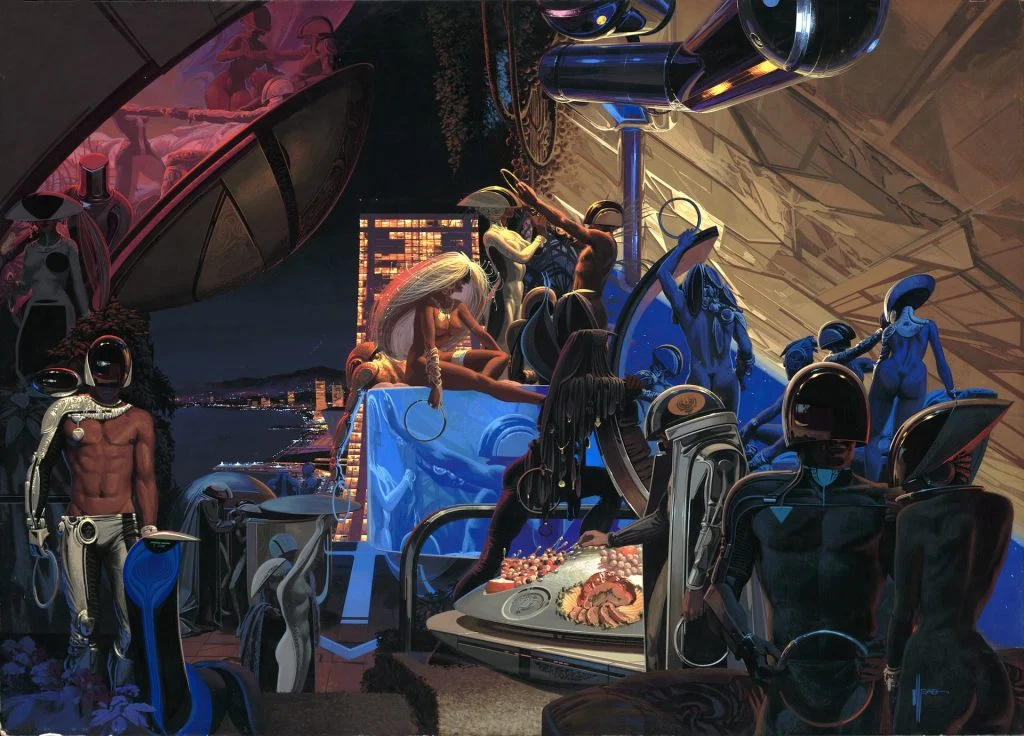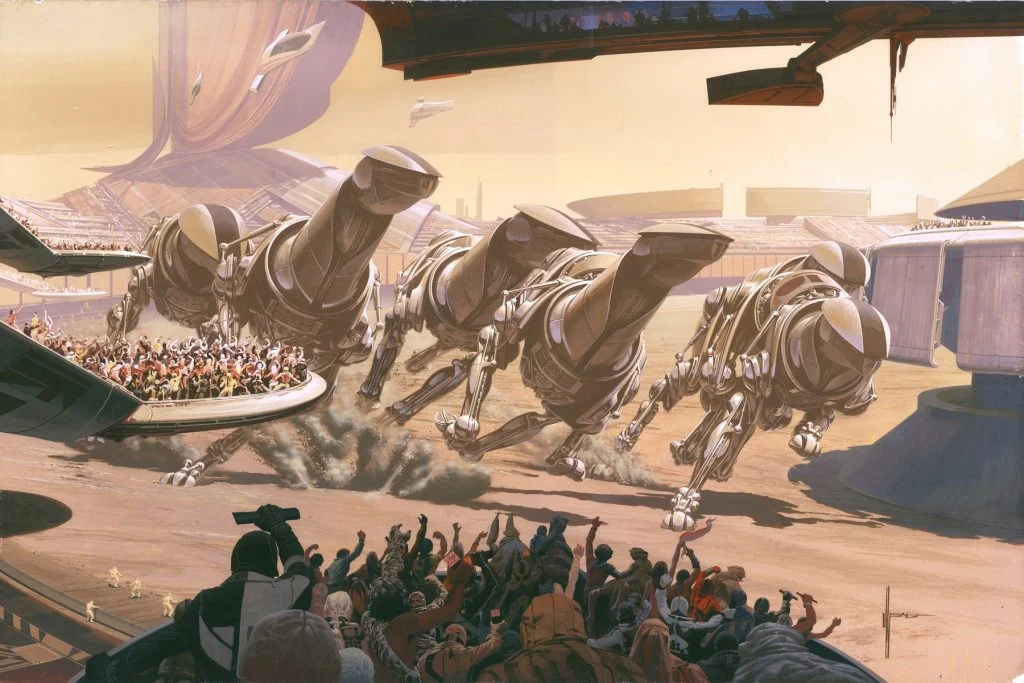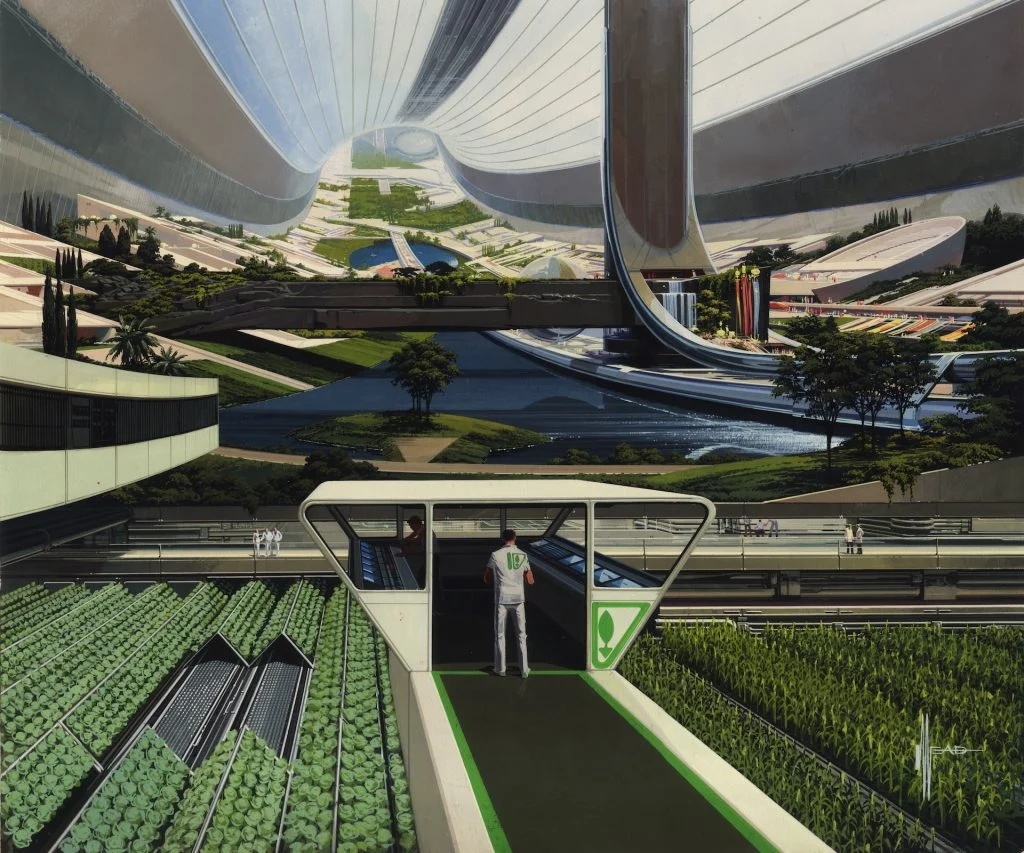
Introduction: The Futuristic World of Syd Mead
When Ridley Scott enlisted the visionary artist Syd Mead for the landmark sci-fi film Blade Runner in 1982, the request initially seemed straightforward: create a futuristic vehicle that protagonist Rick Deckard would pilot through a dystopian city. However, Mead transcended that assignment by not merely sketching a car but envisioning an entire urban ecosystem—an intricate cityscape populated with neon-lit skyscrapers, perpetual rain, and distinctively gritty atmospherics. His comprehensive vision profoundly influenced not only cinema but also the broader realm of speculative and industrial design.
Early Life and the Roots of Mead’s Creativity
Born on July 18, 1933, in Saint Paul, Minnesota, Sydney Jay Mead was captivated from an early age by the colorful narratives of comic books, pulp fiction magazines, and popular science journals. These early encounters fueled his imagination and passion for drawing and innovation. Encouraged by a family who recognized his talents, Mead cultivated an early ability to fuse artistic flair with technological curiosity—traits that later distinguished his professional career.

Following his high school years, Mead enrolled at the Art Center College of Design in Los Angeles, graduating in 1959 with a deep appreciation for automotive aesthetics, architecture, and futuristic visions. His formal education refined his creative abilities and provided a foundation in industrial design principles and cutting-edge technologies.
Industrial Design Career and Major Collaborations
Post-graduation, Mead quickly gained a reputation as a talented industrial designer. Companies such as Ford, Philips, and Sony sought out his visionary expertise. Mead’s designs were groundbreaking not just for their futuristic aesthetics but also for their rigorous technical viability and practicality. Notably, his long-standing collaboration with the U.S. Steel Corporation was significant. The company’s promotional materials, showcasing Mead’s vivid, technologically inspired landscapes and mechanical wonders, became iconic references within design circles and profoundly influenced the era’s design aesthetics.
Mead’s approach consistently integrated human-centric usability with innovative technology, setting new standards in industrial design. His works crossed boundaries, encompassing automotive, architectural, technological, and marketing sectors, demonstrating remarkable versatility and deep technical understanding.

Entering the Realm of Hollywood: From Star Trek to Blade Runner
Mead’s transition from industrial design into film happened almost by chance. The production team of Star Trek: The Motion Picture (1979) initially contacted him to help conceptualize a particularly challenging visual effect. His resulting creation, V’ger—an enormous sentient space vessel—cemented his reputation in Hollywood as a visionary capable of imagining and bringing complex sci-fi constructs to life.
The success of Mead’s cinematic debut quickly caught the attention of other directors. Soon after, Ridley Scott engaged Mead for Blade Runner, a collaboration that forever changed science fiction cinema. Mead’s distinctive vision manifested not only in Deckard’s spinner but permeated every aspect of the film’s hauntingly beautiful dystopia. His contributions defined a genre and elevated the aesthetic sophistication expected in cinematic science fiction.
Expanding Influence: Tron, Aliens, and Beyond
The Hollywood community rapidly embraced Mead’s distinctive futuristic style, drawing him into numerous high-profile projects. Steven Lisberger’s groundbreaking Tron (1982) and James Cameron’s action-packed sci-fi classic Aliens (1986) both benefited immensely from Mead’s contributions. His attention to detail, from conceptualizing spacecraft interiors to rendering futuristic machinery with unprecedented realism, set benchmarks for future film designers.

Even films Mead didn’t directly contribute to echoed his influence. For instance, George Lucas openly acknowledged taking inspiration from Mead’s futuristic industrial sketches for the memorable AT-AT walkers featured prominently in Star Wars: Episode V – The Empire Strikes Back (1980).
Artistic Philosophy: Creating ‘Realities Ahead of Schedule’
Mead described his artistic approach as depicting “reality ahead of schedule,” grounding fantastical ideas firmly in technological plausibility. Unlike the whimsical science fiction of earlier eras, Mead’s work conveyed deeply realistic mechanical and physical principles. His art featured precision-engineered futuristic vehicles, cityscapes built from plausible materials, and environments realistically illuminated by imagined technology.
The emotional and philosophical depth in Mead’s art is equally remarkable. He envisioned future worlds where technology seamlessly integrated into daily life, showcasing scenarios where human interaction with advanced machines is not alienating but enriching. His futuristic visions encompassed utopian ideals, deeply believing technology could enhance societal well-being if thoughtfully integrated into human life.
Iconic Works and Visionary Concepts
Among Mead’s most celebrated pieces are his evocative gouache paintings produced throughout the 1970s and 2000s, capturing idealized futuristic worlds. In these compositions, ordinary activities—such as parties, sports events, and leisure activities—are transformed into compelling futuristic scenarios. His celebrated work “Party 2000” vividly portrays an elite gathering set against a backdrop of towering skyscrapers bathed in vibrant neon hues, while “The Running of the Six Drgxx” features thrilling robotic canine races in crowded futuristic arenas.

These artworks portray a world in which technology amplifies human pleasure, connectivity, and culture, extending rather than replacing everyday experiences. Mead’s ability to merge dynamic human emotions with mechanical realism resonated strongly with audiences, enhancing his lasting appeal.
Syd Mead’s Lasting Legacy and Cultural Impact
Syd Mead’s visionary concepts continue influencing contemporary industrial designers, architects, and filmmakers. His fusion of aesthetics with functionality remains a fundamental guiding principle in current futuristic design projects. Exhibitions, such as the recent “Future Pastime” show in New York, offer a testament to Mead’s enduring legacy, attracting both seasoned admirers and new generations eager to explore his profound impact on design and pop culture.
Mead’s lasting contribution extends beyond cinema and visual arts into broader cultural narratives about technology and humanity’s future. His vision invites society to consider technology not as a disruptive force but as a creative, integrative, and ultimately humanistic element of daily life.
Conclusion: A Visionary Who Defined the Future
Syd Mead’s imaginative genius and meticulous design sensibility carved an indelible mark on the collective imagination. His futuristic visions, which combined technological innovation with human experience, challenged and expanded societal expectations of what the future might hold. Through meticulous craftsmanship and profound artistic insight, Mead illustrated not merely future scenarios, but futures we actively aspire toward—technologically advanced, deeply interconnected, and profoundly human.
His work, grounded in realism yet rich with speculative fantasy, ensures that Syd Mead will remain not only a pivotal figure in science fiction but also an influential thinker whose designs continue shaping our collective vision of what lies ahead.

